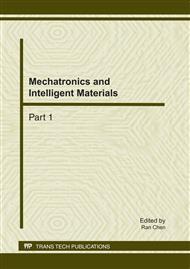p.793
p.798
p.803
p.808
p.813
p.818
p.823
p.827
p.832
Research of Feature Extraction Method on Facial Expression Change
Abstract:
In this paper, the purpose is to find a method that can be more suited to facial expression change and also improve the recognition rate. The proposed system contains three parts, wavelet transform, Fisher linear discriminant method feature extraction and face classification. The basic idea of the proposed method is that first extract the low-frequency components through wavelet transform, then the low-frequency images mapped into a low-dimensional space by PCA transform, and finally the utilization of LDA feature extraction method in low-dimensional space. The algorithms were tested on ORL and Yale face database, respectively. Experimental results shows that the proposed method not only improve the recognition rate, but also improve the recognition speed. This method can effectively overcome the impact of expression changes on face recognition, and play a certain role in inhibition of expression.
Info:
Periodical:
Pages:
813-817
Citation:
Online since:
February 2011
Authors:
Price:
Сopyright:
© 2011 Trans Tech Publications Ltd. All Rights Reserved
Share:
Citation:


